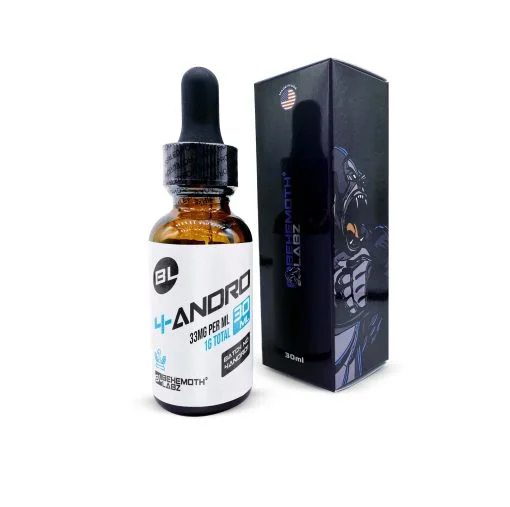Peptides
PE-22-28 Peptide: Benefits, Side Effects, and More
What is PE-22-28 Peptide?
PE-22-28 is a research peptide analogous to naturally occurring molecules known as “Spadin.” It is synthesized through the process known as “Solid-Phase Peptide Synthesis. It consists of 22 to 28 amino acid molecules. In preclinical studies on a research subject, it has shown enhanced stability and efficacy compared to its parent compound. While investigating its potential in research settings, it has been demonstrated that the PE-22-28 peptide may act as a modulator of the TREK-1 receptor.
By potentially influencing the TREK-1 potassium channel in research subjects, it may impact cell regulation (signaling pathways), mood, and cognitive abilities in these subjects. Additionally, it has also shown potential as an antidepressant and neuroprotectant in research investigations.
How Does PE 22-28 Peptide Work?
A preclinical investigation on mice showed that the PE-22-28 peptide may work by influencing the working patterns of TREK-1 receptors with an IC50 value of 0.12 nM. Similarly, it may also work as a ligand on the cell surface and potentially inhibit the action of endogenous signaling molecules. At the same time, other animal model studies have also shown its potential in regulating synaptogenesis. Through all these potential roles, the PE-22-28 peptide may, cognitive functions, neural connections, and inflammation in research subjects.
Potential Benefits of PE-22-28 Peptide
The potential benefits of the PE 22-28 peptide in research studies are as follows:
-
Investigation of Antidepressant-Like Mechanisms in Research Models
An additional potential function of the PE-22-28 peptide observed in preclinical studies is its involvement in pathways associated with mood-related behavior. Experimental data suggest that this peptide may support neurogenesis and synaptogenesis—processes linked to the formation of new neuronal cells and synaptic connections, respectively. These mechanisms may contribute to the modulation of depression-like states in research models under controlled laboratory conditions.
-
Treating Neural Inflammation/Neuroprotective
One of its potential roles may be treating neural inflammation in research subjects. Clinical trials on rats and mice have found its potential to modulate signaling pathways by acting as a ligand. This modulation may reduce the production of proinflammatory cytokines. The decreased cytokine levels in research subjects may influence markers associated with neural inflammation.
-
Regulation of Neuromuscular Activity in Research Models
Possible Side Effects of PE-22-28 Peptide
Although the PE-22-28 peptide has shown promising potential benefits in research studies, it may cause mild to moderate side effects. In preclinical studies, these side effects were easily handled through effective monitoring and adjustment to research protocols. Some of the commonly occurring possible side effects of PE-22-28 are as follows:
- Transient decrease in energy levels
- Gastrointestinal discomfort
- Variability in behavioral responses
- Hypersensitivity reaction
Note: These side effects may vary from subject to subject in a research investigation. Further, they may be treated through an initial consultation with a healthcare professional.
Is PE 22-28 Peptide Legal?
Yes, the PE 22-28 peptide is only legal for research studies. Human consumption of PE 22-28 is strictly prohibited, as it has not been approved by the Food and Drug Administration (FDA) or the World Anti-Doping Agency. Researchers may purchase it for laboratory and investigational purposes only.
Is PE-22-28 Peptide Safe to Use in Research Studies?
Yes, preclinical studies on mice have shown the PE-22-28 peptide safe for use in research settings. Researchers are advised to use the recommended methods in investigational studies, which will enhance safety and efficacy.
Conclusion
In a nutshell, PE-22-28 is a novel research peptide with the potential to play essential roles in research investigation. Studies on animals have found its potential to act as a TREK-1 receptor inhibitor. By inhibiting the TREK-1 receptors’ potassium channel in research subjects, PE-22-28 peptides may regulate, cognitive functions, and neuroinflammation.
Frequently Asked Questions (FAQs)
What is the use of the PE-22-28 peptide in research settings?
The potential use of PE-22-28 peptides in research studies is to regulate TREK-1 receptor working patterns. By inhibiting the TREK-1 receptor in research subjects, the PE-22-28 peptide may influence mood regulation and treat neural inflammation.
What is the best place to buy PE-22-28 peptides online?
The best place to buy PE-22-28 peptides online is BehemothLabz. Here, you will find top-class peptides, including PE-22-28, for sale at reasonable prices; however, only for research purposes. Our prices are within your buying range despite the highest quality and purity. In addition to that, our products can be purchased nationally and internationally with a fast shipping mechanism.










